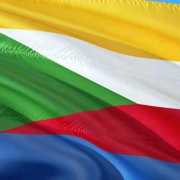The Qatar LNG backflip
Look wherever you want, you are swamped by stories on the LNG wave that’s about to hit Europe. After almost a decade of neglect, Europe has become the powerhouse of global LNG trade again not because of its vanilla qualities but rather because the old world is the last place where LNG exporters with no captive buyer can go.
I kicked that issue to death in other articles, and we will no doubt come back to the general topic many times as this will haunt us for a long while. For now, however, let’s concentrate on one of the fundamental core drivers of this oversupply situation. Everyone is going to stare with his eyes wide shut at the US and Australia for clues on what is going to happen over the next months – years – decades maybe.
However, understanding the kernel of truth in this whole madness requires us to take off the velvet gloves and pick apart the position of the most glorious of all LNG players – the Qataris. Yes, you read alright. The superstars of the LNG trade are not at all bystanders in this game as their position is as precarious as many others. And they had it coming for a lot of years.
Qatar is – for the time being – the biggest LNG seller. Soon they will be overtaken by the Aussies just like the Qataris overtook the Indonesians some couple of years ago. They will remain one of the very large players for the foreseeable future so anything that happens to Qatar necessarily produces an effect in the wider LNG world.
Those with memories of more than the last quarter might remember the original Qatari LNG marketing strategy. More than 10 years ago, they lived in their marvelous world of LNG scarcity where everyone had beaten a path to their doors and showered them with cash. And they did what people in such a luxurious position do. They divided the world (the LNG-consuming world) into 3 regions which should each receive roughly a third of all available Qatari LNG.
A nice plan but then, something called the shale gas revolution made North America – once hailed as the El Dorado for LNG sellers – a dead land for them. With the onset of shale, the nice plan of the Qataris was mush.
What came to the rescue was one of the biggest calamities we know of in the energy world – the Fukushima disaster. How that?
Japan has been the biggest importer of LNG for many decades now. The island is entirely dependent on LNG when it comes to Natural Gas. It has no real Natural Gas production of its own and is separated from gas exporters by deep ocean trenches which make offshore pipelines unfeasible. Underground storage is also not possible for the lack of geological structures that would welcome such activity so all the flexibility Japan needed came from the storage tanks. That’s why Japan overbuilt them massively. They needed to be sure that there was always enough LNG in store to keep the massive Japanese economy humming no matter what.
Traditionally, Japan had organized its energy portfolio into base-load and peak. They had anointed nuclear and coal as base-load power and oil plus LNG as peak power. Makes a lot of sense as oil and LNG are the pricier options – usually. When Fukushima hit them in 2011, LNG already showed signs of weakening. Suddenly the entire nuclear generation park of the then second largest economy on earth screeched to a halt taking out a massive part of the base-load power picture. Japan maxed out on the rest of the generation portfolio in an emergency which means that lots of peak power production was going base-load.
This, in turn, meant a lot more LNG was required and as the capacity was there (remember there was always overcapacity in storage and generation to be ready for any peak), Japan became the biggest devourer of freely available LNG in the world – at any price one must add. Their immediate energy security was more important than petty price considerations.
This wiped out a looming global LNG glut (remember the LNG destined for the US but not needed anymore because of shale) in an instant and enabled producers to feast on super-high prices for a while longer. Japan fattened those producers to the point where everyone believed that this was a “happy ever after” party. Except that – it wasn’t.
The effects of this binge party were what we can observe today – projects mainly in the US and in Australia that took FID at obscenely high cost. I would guess that if the much smaller glut in 2011 would have allowed unfolding – which means that had Fukushima never happened – then most of those projects would not have seen the light of day. This also means that there would not be a tidal wave of LNG on our shores today and many of the issues we face today such as LNG to pipeline gas competition in Europe or the very vigorous push for LNG as the new bunkering fuel of choice would not bloom out in this intensity.
Qatar’s desire to mask its unhinged portfolio by gorging on the Japanese feast caused the biggest eruption in LNG history. This is how small things can go biblical if only one little Black Swan (Fukushima was not predictable) materializes and the leading producers are in a tight corner.














Leave a Reply
Want to join the discussion?Feel free to contribute!